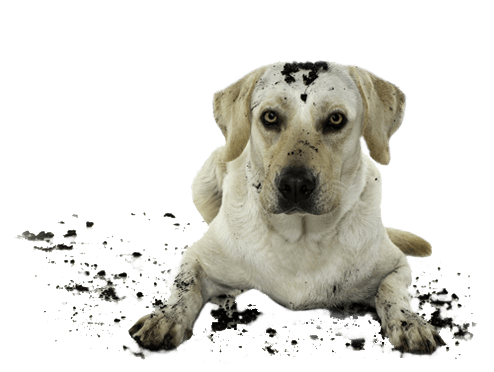Common Emergencies
Here are some of the common emergencies we treat at the Pet Emergency Center. Each patient is different in regards to the overall treatments which may be needed but we hope to provide you some information about common treatments for common problems.
Please click on the topic below for more information.
Vomiting
Sometimes our pets just are not acting normal. They may be lethargic, have a decreased appetite, not wanting to get up and play or showing you some sign which tells you something is not right. You know your pets the best. Unusual behavior can be a sign of a medical problem especially if it has been going on for 2 or more days. If our pets could only tell us when they are not feeling well or where it may hurt. If you feel your pet is ADR then give us a call. We will discuss your pets medical history, any known injuries or exposure to medications, traumas, chemicals etc. Our veterinarians may recommend some bloodwork to help better assess your pets overall health. While some things can be diagnosed on the physical exam other things which are happening inside the body may need the results obtained from bloodwork or radiographs (X Rays) to make the diagnosis and start a treatment plan.
Diarrhea
Diarrhea is much more common in dogs than in cats. If your dog or cat has diarrhea (soft watery feces) and it goes away in 8-12 hours then it may have been a mild gastrointestinal issues which has resolved. If there is no vomiting then keep your pet on their regular dog food diet: NO TABLE FOODS. NO MILK. If the diarrhea continues and there is vomiting as well or you notice blood in the feces then its time to have your pet examined. There is a long list of possible causes of diarrhea in dogs and cats. Have they been fully vaccinated, how old are they, what is there diet, did they eat something they should not have, are they on heartworm preventative. This is just a few of the questions you will be asked by our veterinarians. If our pets could only tell us what they may have ingested or how they feel this would help greatly. Following the examination by our veterinarian you will both discuss the possible causes and together decide on a treatment plan which is best for your pet. Some cases of diarrhea can be treated with medications and the patient sent home. Other patients have much more serious conditions which may require additional diagnostics and hospitalization.
Bite Wounds
Bite wounds caused by other animals are very common. Even small wounds should be treated as soon as possible as bite wounds have a high risk of infection. Within several days after a bite happens an abscess may form which will require greater treatments at more cost. Bite wounds can also be very serious from the damage they can do. A bite wound on the skin may appear small but the damage done under the skin can be substantial. Have all bite wounds checked as soon as possible. Most minor wounds require only a cleaning and starting some antibiotic treatment. Our veterinarians will examine your pet to determine the severity of the wound and discuss with you the best treatment.

Bufo Toads

Toxicity from exposure is much more common in dogs than in cats. The toad secretes a toxin which when ingested causes an immediate reaction of hypersalivating, very red mucus membranes, vomiting, tremors and potentially (and very commonly) seizures. Bufo toad toxicity can be fatal. Smaller dogs have a much more difficult time with the toxicity than larger dogs. Terriers, daschunds LOVE to chance and catch toads. Bufo toads are in our environment and more common at night and after it rains. If you suspect your dog has been poisoned by a Bufo toad call us immediately or just bring your pet in as soon as you can. Our veterinarians will assess your pet for the level of reaction to the toxin and take immediate steps to start treatments. Some pets with a mild exposure require no treatments. Some pets have a very severe reaction which requires hospitalization. There is no antidote for Bufo toxin. Supportive care to control seizures, hydration and time usually results in most pets having a full recovery.
Euthanasia
Our most difficult decision for our pets needs to be made with the care and love you shared with them over the years. We are here to help you at this difficult time. Please call us if you feel your pets quality of life has reached a point where saying good bye is the best thing we can give to them. They need you now more than ever at this time of their life. Let us together help them.
Straining to Urinate
If your dog or cat is showing you signs that they are straining to urinate; making frequent attempts to pass urine with little or no urine passed or if you notice blood in the urine you need to have your pet checked NOW! A urinary blockage due to urinary stones or other conditions is VERY SERIOUS. Do not wait until morning. A urinary blockage is very painful and can result in severe complications for the kidneys and can be fatal. Male cats have a much greater risk for urinary blockage. Call us immediately to have your pet examined. Our veterinarian will many times be able to tell you after palpating the abdomen if they suspect your pet has a urinary obstruction due to the size of the urinary bladder. It may only be a urinary tract infection or inflammation but if your pet has a urinary blockage then time is a critical factor in starting their treatment and their recovery.
Difficulty Breathing

Changes in the breathing rate and effort can be a sign of a serious illness. When breathing is compromised all other activities (eating, drinking, walking etc) become secondary. Labored breathing can result from heart disease, allergic reactions, trauma, pneumonia, cancer and many other causes. Labored breathing is truly a condition that needs to be check as soon as possible. Labored breathing can be very serious and life threatening. Please call us immediately if you suspect your pet is having any difficulty breathing. Our veterinarians will discuss your pets past medical history and listen to the breathing and airway. Radiographs (XRays) may be needed to evaluate the condition of lungs and top look for the underlying cause of the breathing issue. Radiographs will many times allow us to make a diagnosis and establish a treatment plan for their care.
Limping/ Lameness
Just like humans our pets can have orthopedic and soft tissue injuries which result in limping and lameness to a limb. Most emergency cases of limping result from trauma ( jumping from furniture, tripping while running, hit by car accidents, falls, getting stepped on). If your pet is showing signs of lameness/limping it may be the result of a fracture, dislocation or a sprain. Our veterinarians can examine your pet and try to localize where the discomfort is coming from and assess the degree of weight bearing on the limb. For suspected sprains some pain control and limited activity may be all that is needed. For more serious injuries radiographs (X Rays) may be needed to look for fractures or dislocations of the bones. If you can see your pet has an obvious fracture to a limb then it is best to have it checked immediately. An unstable fracture can result in much more pain and increase the chance for additional damage to the surrounding muscle and nerves. We can stabilize the fracture with a splint or support wrap to reduce the pain and movement. Our veterinarians can provide additional pain control and keep your pet comfortable until they can be seen by your veterinarian the next day to discuss the final repair.
Squinting
Squinting of one or both eyes is a sign of pain or inflammation. Squinting is most commonly seen as a result of scratches/ulcers to the cornea (surface of the eye). These injuries should be checked and treated immediately to avoid more serious lesions. Many times when our pet have eye injuries they will rub or paw at their face which can make the injury worse. Our veterinarians will examine your pets eyes to look for the possible source of the irritation. A diagnostic stain is applied to the surface of the eye many times to reveal any ulcers or scratches. Based on the findings of the exam the best treatment will be selected to relieve the discomfort and squinting as soon as possible.
ADR: Ain't Doing Right

Sometimes our pets just are not acting normal. They may be lethargic, have a decreased appetite, not wanting to get up and play or showing you some sign which tells you something is not right. You know your pets the best. Unusual behavior can be a sign of a medical problem especially if it has been going on for 2 or more days. If our pets could only tell us when they are not feeling well or where it may hurt. If you feel your pet is ADR then give us a call. We will discuss your pets medical history, any known injuries or exposure to medications, traumas, chemicals etc. Our veterinarians may recommend some bloodwork to help better assess your pets overall health. While some things can be diagnosed on the physical exam other things which are happening inside the body may need the results obtained from bloodwork or radiographs (X Rays) to make the diagnosis and start a treatment plan.
